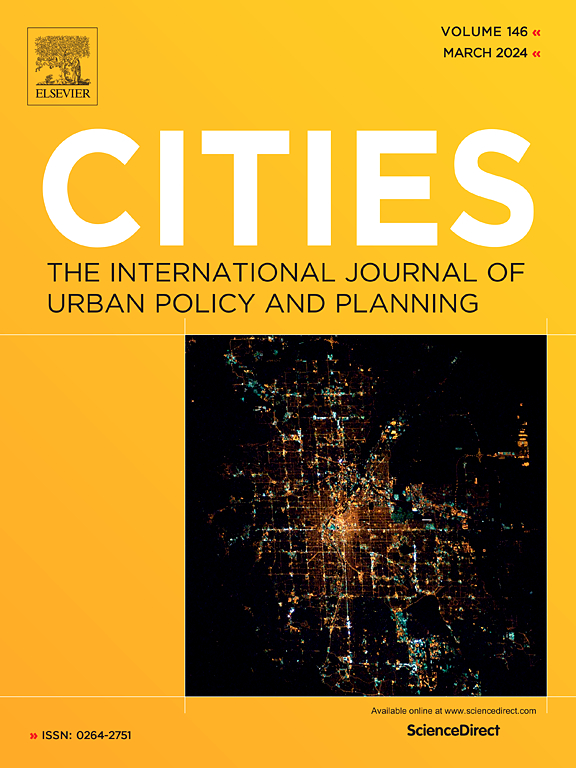蓝绿色基础设施综合评估框架:用于评估与建设和维护成本相关的气候适应和社会效益的决策支持工具
IF 6
1区 经济学
Q1 URBAN STUDIES
引用次数: 0
摘要
在气候变化、快速城市化和人口密集化的时代,需要能够应对极端天气事件的空间,如热浪和强降水,同时对城市居民具有吸引力,即多功能空间。本文基于现有的最佳研究,提出了一个综合评估多个城市蓝绿基础设施(BGI)要素在提供气候调节和社会功能方面的潜力的框架,即在规划中使用的与建设和维护成本相关的多功能潜力。使用混合方法(系统文献综述、模型模拟和研讨会),以1到5的名义等级对功能和成本进行评估。综合评估以多功能潜力和成本矩阵的形式呈现,并允许对每个功能和成本进行加权,因为它们的相对重要性取决于具体情况。研究表明,大多数华大基因元素在城市雨水管理、减少热应力和娱乐方面提供多功能的潜力相对较低。其中一些是低成本的(例如,道路边缘,沟渠,透水人行道),另一些是高成本的(例如,绿色屋顶和墙壁)。最大的多功能潜力是在大型公园中发现的,但成本很高。最有利的因素,即成本方面潜力大的因素是城市森林。这里提出的矩阵被认为可用于在规划中做出全面的综合决策,并增强对华大基因要素单一和多重功能的认识。本文章由计算机程序翻译,如有差异,请以英文原文为准。
A framework for integrated assessment of blue-green infrastructure: A decision support tool for evaluating climate adaptation and social benefits in relation to construction and maintenance costs
In an era of changing climate, rapid urbanization, and densification there is a need for spaces that can manage extreme weather events, such as heat waves and heavy precipitation, whilst simultaneously be attractive for the urban citizens, i.e., multifunctional spaces. In this paper a framework for integrated assessment of the potential of multiple urban blue-green infrastructure (BGI) elements to provide climate regulating and social functions, i.e. multifunctionality potential, based on best research available, in relation to cost for construction and maintenance to be used in planning is presented. The assessment of functions and costs is done on a nominal scale from 1 to 5 using a mixed-method approach (systematic literature review, model simulations and workshops). The integrated assessment is presented in a multifunctionality potential and cost matrix and allows for weighting of each function and cost, as their relative importance is context dependent. It is shown that the majority of BGI elements have a relatively low potential to provide multifunctionality in terms of urban stormwater management, heat stress reduction and recreation. Some of them to a low cost (e.g., road verges, ditches, permeable pavements) others to a high cost (e.g., green roofs and walls). The highest multifunctionality potential is found in large parks, but to a high cost. The most favourable element, i.e., high potential in relation to costs is urban forests. The matrix presented here is considered usable for making general well informed integrated decisions in planning and to enhance the awareness of single and multiple functions of BGI elements.
求助全文
通过发布文献求助,成功后即可免费获取论文全文。
去求助
来源期刊

Cities
URBAN STUDIES-
CiteScore
11.20
自引率
9.00%
发文量
517
期刊介绍:
Cities offers a comprehensive range of articles on all aspects of urban policy. It provides an international and interdisciplinary platform for the exchange of ideas and information between urban planners and policy makers from national and local government, non-government organizations, academia and consultancy. The primary aims of the journal are to analyse and assess past and present urban development and management as a reflection of effective, ineffective and non-existent planning policies; and the promotion of the implementation of appropriate urban policies in both the developed and the developing world.
 求助内容:
求助内容: 应助结果提醒方式:
应助结果提醒方式:


